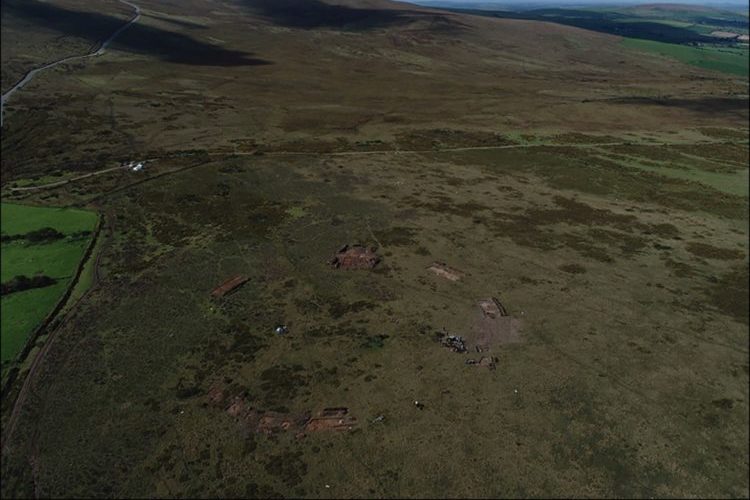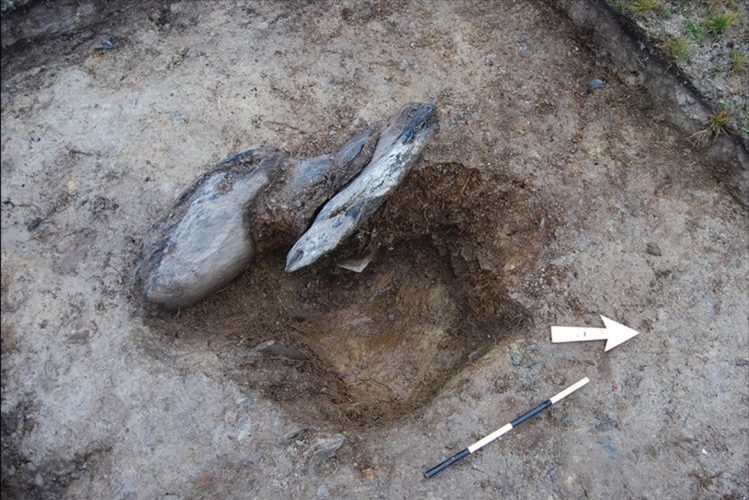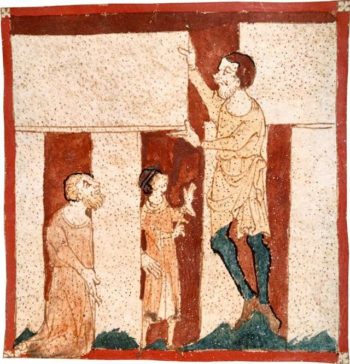
The mystery surrounding why Stonehenge contains bluestones brought from a Welsh hillside is one step closer to being solved thanks to ground-breaking work by the 'Stones of Stonehenge' research team which included the University of St Andrews.
Dr Tim Kinnaird, of the School of Earth and Environmental Sciences at the University of St Andrews, used a technique called optically-stimulated luminescence dating to determine the age of a dismantled stone circle at Waun Mawn situated in the Preseli Hills, close to bluestone quarry sites.
Waun Mawn, if complete, would be the third largest stone circle in Britain after Avebury in Wiltshire and Stanton Drew in Somerset.

One of the empty stone sockets at Waun Mawn has an unusual cross-section which matches one of the bluestones at Stonehenge, and chippings in that hole are of the same rock type as the Stonehenge stone. Critically, the researchers were able to date the soils that infill the dismantled stone sockets with surprising results: they found that the stones were removed immediately prior to the known date of construction of Stonehenge 1, at around 3000BCE.
Dr Kinnaird said: "It is the hidden information preserved in the soils that provides the chronology for the construction, then the dismantlement of the Waun Mawn stone circle, which appears to have intriguingly occurred just before similar stones were erected at Stonehenge.
 "Combined with the fact that the Waun Mawn bluestones came from the same quarries as Stonehenge, this led us to conclude that Waun Mawn was likely dismantled and became the source of many of the bluestones used at Stonehenge."
"Combined with the fact that the Waun Mawn bluestones came from the same quarries as Stonehenge, this led us to conclude that Waun Mawn was likely dismantled and became the source of many of the bluestones used at Stonehenge."
The research published in Antiquity also found that Waun Mawn has an identical diameter to the ditch surrounding Stonehenge, of 110 metres, and that it is also aligned on the midsummer solstice sunrise.
The research team was led by Professor Mike Parker Pearson of University College London who, along with colleagues Professor Josh Pollard of the University of Southampton, Professor Colin Richards of the University of the Highlands & Islands and Professor Kate Welham of Bournemouth University, has co-directed excavations at Stonehenge and its World Heritage Site since 2004.
The project will feature on a BBC 2 documentary Stonehenge: The Lost Circle Revealed to be broadcast at 9pm on Friday 12 February.
Image 1 (top): Excavation of the stone holes at Waun Mawn, revealing the scale of the monument. Credit: A. Stanford.
Image 2 (middle): A stonehole uncovered at Waun Mawn with the stone packing used to secure the missing stone still present. Credit: M. Parker Pearson.
Image 3 (bottom): Merlin erecting Stonehenge out of the stones from the Giants' Dance (from a 14th century French Romance. Credit: British Library Egerton MS 3028, fo. 140v.)
The paper, 'The original Stonehenge? A dismantled stone circle in the Presili Hills of west Wales' by Mike Parker Pearson, Josh Pollard, Colin Richards, Kate Welham, Timothy Kinnaird, Dave Shaw, Ellen Simmons, Adam Stanford, Richard Bevins, Rob Ixer, Clive Ruggles, Jim Rylatt and Kevan Edinborough is published in Antiquity and available online.
Please ensure that the paper's DOI [doi.org/10.15184/aqy.2020.239] is included in all online stories and social media posts and that Antiquity is credited as the source.






